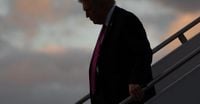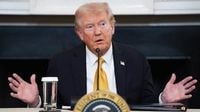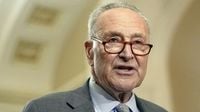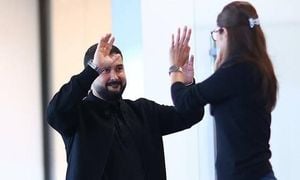President Donald Trump embarked on a whirlwind diplomatic tour of Asia this week, seeking to ease tensions with China, shore up alliances in the region, and project American influence amid a backdrop of domestic turmoil and global uncertainty. The president’s five-day journey, which began on October 25, 2025, includes stops in Malaysia, Japan, and South Korea, and is highlighted by a highly anticipated meeting with Chinese President Xi Jinping scheduled for October 30 at the Asia-Pacific Economic Cooperation (APEC) summit in South Korea.
According to CNN, the trip kicked off in Kuala Lumpur, Malaysia, where U.S. and Chinese officials launched trade talks aimed at de-escalating the ongoing trade war between the world’s two largest economies. While the agenda is packed with pressing issues—ranging from tariffs and technology export controls to rare earths and energy security—the stakes are especially high as both countries have recently imposed sweeping trade measures on each other, setting back relations after a period of relative calm.
“I’m hoping for a comprehensive deal,” President Trump told reporters before departing Washington. The White House has made clear that the goal of this trip is to find common ground with Beijing, even as Trump ratchets up economic pressure elsewhere—most notably on Canada, whose Prime Minister Mark Carney will also be in Asia for the summit. However, Trump said he has no plans to meet Carney, citing an anti-tariff ad campaign by Ontario’s government that aired during the first two games of the World Series. “No, I don’t have any plan to,” Trump said, calling the ad “really dishonest.”
The diplomatic drama unfolded against a backdrop of domestic crisis. As reported by CNN, the U.S. government shutdown, which began on October 1, 2025, continues to drag on with no end in sight. Senators left town for the weekend without a deal to fund the government, leaving furloughed federal workers struggling to receive unemployment aid and food stamp recipients facing uncertainty over their benefits next month. The U.S. Department of Agriculture has stated it will not tap into its $6 billion contingency fund to cover food stamp benefits in November if the shutdown persists, potentially affecting 42 million Americans. Yet, Trump offered a more optimistic—if vague—reassurance: “Yeah, everybody is going to be in good shape, yep.”
Internationally, Trump’s Asia trip has been marked by rapid-fire diplomacy. During a refueling stop in Doha, Qatar, the president met briefly with Emir Tamim bin Hamad Al Thani to discuss post-war planning for Gaza and the fragile peace deal between Israel and Hamas. “They’re actually picking leaders right now,” Trump said, expressing hope that the U.S.-brokered ceasefire, which calls for an International Stabilization Force to train vetted Palestinian police forces, “should be enduring peace.” But he also warned, “If it doesn’t hold, then they’ll have a very, very big problem,” referring to Hamas.
Secretary of State Marco Rubio and Ambassador to Israel Mike Huckabee, both accompanying the president, met with American-Israeli hostage families in Israel before joining the Asia delegation. The U.S. is pressing for the return of the remains of hostages still held in Gaza, and Israel has approved an Egyptian team to help locate the bodies. Hamas has so far returned 15 of the 28 bodies it is due to return under the ceasefire agreement.
On the trade front, the upcoming Trump-Xi meeting is seen as a critical juncture. The agenda is expected to cover not only tariffs and rare earths but also China’s recent suspension of seaborne Russian oil purchases following U.S. sanctions over the Kremlin’s invasion of Ukraine. “You probably saw today China is cutting back very substantially on the purchase of Russian oil,” Trump told reporters, hinting that energy security and sanctions enforcement will be on the table. He added, “We want China to help us out on Russia. We’ll have a good meeting. I’m pretty sure we’re going to have a great meeting, maybe a great meeting.”
Trump’s approach to Russia has been notably cautious of late. After a phone call with Russian President Vladimir Putin last week, Trump initially announced plans for an in-person summit in Budapest, believing enough progress had been made toward peace between Russia and Ukraine. But five days later, he canceled the meeting and imposed new sanctions on Moscow. “It just didn’t feel right to me,” Trump said. “It didn’t feel like we were going to get to the place we have to get. So I canceled it.”
Meanwhile, Trump is also weighing a possible meeting with North Korean leader Kim Jong Un during his Asia trip, though he’s uncertain if it will happen. “I don’t know. We let him know. He knows that I’m going there,” Trump said, adding, “I get along with him very well.”
As the president crisscrosses Asia, the U.S. military is projecting power in other regions as well. The aircraft carrier USS Gerald R Ford, carrying F/A-18 fighter jets and a crew of nearly 4,600, is being sent to the Caribbean as part of a campaign against alleged drug trafficking operations. Trump has pledged to stop “all drugs” from entering the United States by sea or land, and has not ruled out further strikes on land targets in Venezuela.
Domestically, the government shutdown continues to reverberate. The impasse has been fueled by partisan disagreement, as Democrats refuse to support a short-term spending bill without an extension of enhanced Affordable Care Act subsidies. Republicans, for their part, have shown little willingness to compromise. The result has been a cascade of disruptions, from delayed unemployment benefits to the risk of millions losing food assistance.
Despite the chaos at home, Trump’s Asia trip is being closely watched for signs of progress on the global stage. The president’s packed itinerary includes meetings with Malaysian Prime Minister Anwar Ibrahim, newly elected Japanese Prime Minister Sanae Takaichi, and South Korean President Lee Jae Myung. He’ll also attend a working dinner with leaders of the Association of Southeast Asian Nations and deliver remarks at the APEC summit.
With so many moving parts—trade wars, diplomatic summits, military deployments, and a government shutdown—the coming week could prove pivotal for both the Trump administration and America’s role in the world. As the president himself put it, “We’ll have a good meeting. I’m pretty sure we’re going to have a great meeting, maybe a great meeting.” The world, and a weary Washington, will be watching closely.






